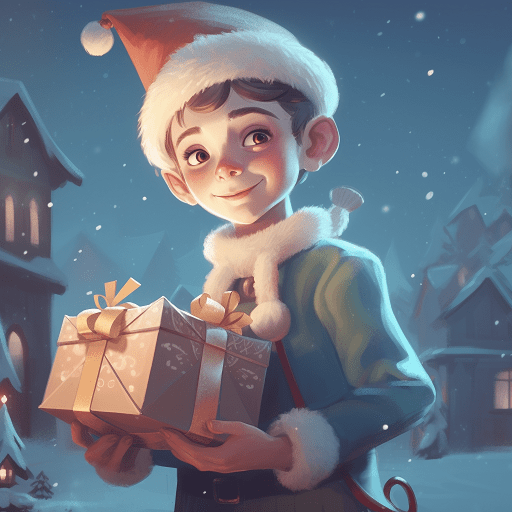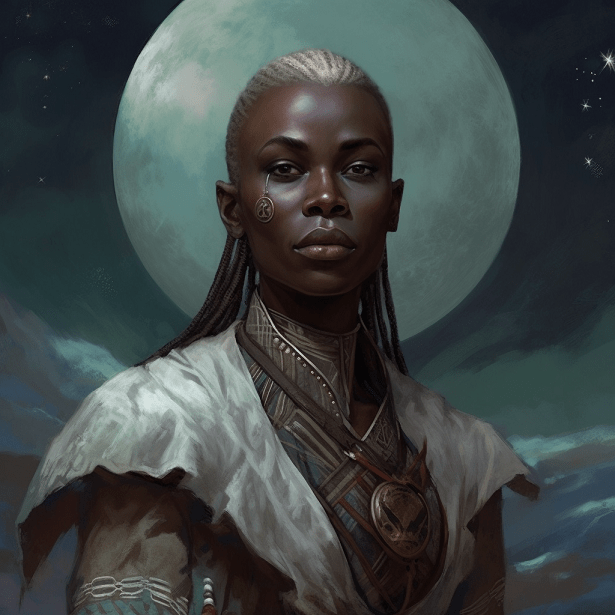
Elves are described as magical humanoid creatures from the Old Germanic mythologies and modern classic medieval novels. They are powerful creatures possessing magic abilities and exceptional beauty far superior to humans. Definitions and descriptions of Elves already changed over time. There are written works that remain to describe them as mythical creatures, while there are others that associate Elves with craftsmanship and gift-making. In this article, we’ll coarse you through some of the origins of a few Elf names. You will also learn bout the meaning of some Elf names and know some Elf name inspirations. If you are looking for perfect Elf name ideas with meanings and origins, this article is for you!
Elf descriptions have changed over time from the old Germanic myths. Their definition will differ depending on the context in which they are used. Children’s stories, for example, describe Elves as little gift makers of Santa Claus. They live at the North Pole and prepare the gifts that are part of Santa’s accepted wishlist. Elves from children’s stories are small in height, outgoing, has pointy ears, and ride sleighs as a form of transportation. Elves from these storybooks are associated with the Christmas season or Thanksgiving.
On the other hand, fantasy novels such as The Lord of the Rings, Blood of Elves (The Witcher Series), or Path Of A Novice (The Silvan Series) describe Elves differently. The Elves in these fantasy stories exist as an independent race living among other competing races such as Men, Dwarves, and Orcs. Elves are often described as the most beautiful race and the most advanced in knowledge of nature and magic. They also have the gift of immortality, making them invulnerable to aging through time. The Elf race is also a common character choice in video games and tabletop games like The Elder Scrolls, Dungeons & Dragons, Dragon Age, Pathfinder, Warcraft, and many more.
In children’s stories, Elf names are taken from familiar terms that are synonymous with holidays, the Christmas season, and the winter season. Common European names may also be used to give an easy-to-remember name for young readers. Additionally, since children are the target readers, the chosen Elf name is light, cute, and soft-sounding. Below are a few examples of popular Elf names for Christmas.
Snowflake | Julie | Cedar |
Carol | Marco | Cinnamon |
Wish | Mittens | Joy |
Marley | Pointy | Ginger |
Keagan | Cheeky | Garland |
Pines | Darby | Spice |
Snowball | Milo | Sugar |
Carrot | Kringle | Roxy |
Frosty | Chimes | Hope |
Shinney | Clover | Cheese |

Fantasy Elf names are based on fictional languages existing only in the novel or game. In Middle-Earth mythology, Tolkien devised two Elven languages, the Quenya and Sindarin. He based all the Elf names in his book on these two languages, making them very distinct and exclusive compared with other novels. Tolkien’s brilliant work on Elf names makes it a grand reference for future literary works involving elves.
A common structure and name convention can be observed in Elf names regardless of the source. Elf names should sound mythical, foreign (coming from a different language), and elegant when pronounced. Elf names must also have meaning. Their names are associated with terms defining nature, magic, abilities, or power. We can always draw inspirations from Tolkien’s fantasy Elven languages to create our own Elf words and names. Take a look at some of the best new Elf names we prepared for readers.
Below are some examples of self-made Elf names based on the Elf naming convention and ideas from Tolkien’s Mythology of Moddle-Earth.
There are many types of Elves depending on the sources. For example, the novel and video game Warcraft, including its online expansion World of Warcraft, mentioned 6 types of Elves namely; The Kaldorei (Night Elves), the Quel’dorei (Highborne Elves), the Shal’dorei (Nightborne Elves), the Sin’dorei (Blood Elves), the Darkfallen Elves (Undead Elves), and the Ren’dorei (Void Elves). Tolkien’s Middle-Earth, on the other hand, divided Elves into three main types, followed by a branching out of Elf subtypes. The main types are the Vanyar, the Noldor, and the Teleri. From these main types branched out other Elf subtypes such as the Sindar, Umanyar, Amanyar, and the Moriquendi.
Dungeons & Dragons Elf also introduced types or subraces in their game. Elf subraces were first introduced in the Forgotten Realms campaign. A few of the many Elf types introduced n this version are: The Aquatic Elves (or Sea Elves), the Avariel (Winged Elves), the Drow (Dark Elves), the Mithral (Star Elves), the Sylvan (Wood and Copper Elves), and the Silver Elves (Moon Elves).
The Elder Scrolls Saga introduced 4 common types of Elves in the game, namely: The Altmers (High Elf), the Bosmer (Wood Elf), the Dunmer (Dark Elf), and the Orsimer (Orcs). There are also sub-race variants introduced as an offshoot from the main Elf type. This includes the Dwemer (Dwarves), the Chimer (Changed Elves), the Maormer (Sea Elves), the Aldmer (First Elves), the Ayleid (Wild Elves), and the Falmer (Snow Elves).
The moon Elves is a subrace of the Elf introduced in the Forgotten Realms of Dungeons & Dragons (DnD). They are also known as silver Elves and they are considered the most common kind of Elf subrace. Contrary to most Elf kinds, a moon Elf has pale skin with blue hues, dark hair, and greenish or bluish eyes.
Another popular game that featured Moon Elves is the Warcraft III franchise. They named the moon Elves “Night” Elves as they have a strong affinity with the night especially with the moon. They also have the pale and bluish complexion as with the DnD Moon Elf. Moon Elf names are sharper and rougher when pronounced compared to the elegant-sounding Elf name. They also use surnames that represents their house, or their affinity or relationship with the moon.

Wood Elves are the most common type of Elf to be used in fantasy games and series. They are included in games like The Elder Scrolls (called Bosmers) and Warhammer, and in novels such as The Lord of the Rings (called Silvan Elves). Wood Elves are the masters of forests and trees. They are skilled with the bow and can shoot targets from a far distance. They can traverse trees easily and they mastered planting and befriending wild animals. The same with other Elf variants, Wood Elf also shares the same naming convention. The only difference is they have names that are associated with forests, trees, and animals.
